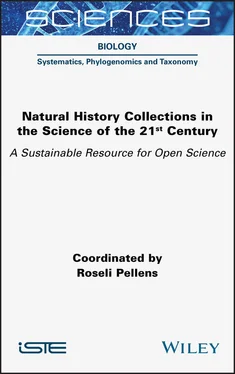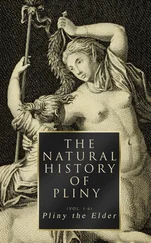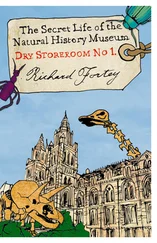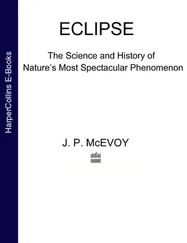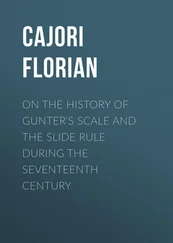Greenberg and Szyska (1984), who studied the biology and ethology of two species found in Peru ( Compsomyiops verena (Walker) and C. arequipensis (Mello) 12), attest that the lifecycle of C. verena (egg to adult) varies between 15.2 and 19.7 days. At significantly higher temperatures, however, Dale and Prudot (1986) report a duration of 12.5 to 15 days for C. arequipensis . Based on observations by Greenberg and Szyska (1984), supplemented by Baumgartner and Greenberg (1985), C. arequipensis preferentially occupies high-altitude environments and C. verena low valley environments. Data from Mariluis and Schnack (1996) on the biology of representatives of the genus Compsomyiops in Argentina reveal that these species are particularly fond of forest and rural environments and are only active during the warmest months of the year. Finally, the experiments conducted by Figueroa-Roa and Linhares (2002) underline a very marked heliophilia 13in the species Compsomyiops fulvicrura (Robineau-Desvoidy) in Chile.
Although, as Greenberg and Szyska (1984) point out, the similarities between the immature stages of these two species cannot be denied, data from their biology and from the environmental characteristics of the site where the mummy was found (Reichlen and Reichlen 1950) allow us to hypothesize that the species could correspond to C. arequipensis (Mello) (Figure 4.11).

Figure 4.11. Remarkably preserved subfossil puparium of a Calliphoridae fly ( Compsomyops cf . arequipensis (Mello)) from the mummy’s left thigh. Photo © J.B. Huchet
4.3.5. Cranial trepanation: location, size and mode of operation
The cranial trepanation present in the mummy, subcircular in shape and with a diameter of approximately 5 cm, extends over an area of more than 20 cm 2(Figures 4.12(a) and (b)). Endocranial 3D reconstructions show that this trepanation avoids the main pericerebral venous (superior longitudinal sinus, torcular, left lateral sinus) and arterial vascular structures (the imprints of the main branches of the meningeal arteries, visible in the endocranial view, are remote) (Figure 4.12(c)).
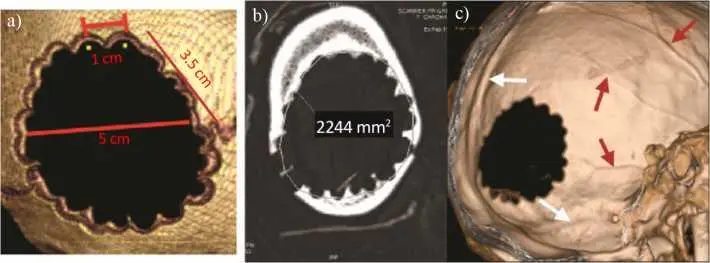
Figure 4.12. (a and b) Trepanation measurements. (c) Endocranial view of the trepanation site away from the main venous (white arrows) and arterial (red arrows) vascular structures. Image: (a) © Dr. C. Bou; images: (b and c) © Dr. S. Mérigeaud MD/Tridilogy
The edges of the trepanation preserve the trace of 20 microperforations, with a diameter of 0.7 and 1 cm, arranged in a circle, in a regular and confluent manner. A distance of approximately 1 cm between the center of each microperforation is maintained along most of the perimeter of the trepanation, with the exception of an area limited to 3.5 cm where the microperforations are positioned in a more irregular and constricted manner (Figure 4.12(a)).
In the experimental trepanation, the 20 microperforations were reproduced by rotating a flint tip along an axis vertical to the plane of the cranial vault. The rotations were first performed manually to initiate the perforation, and then with a bow until all perforations were joined (Figure 4.13(a)). The duration of the experiment, to obtain complete trepanation, was over four hours. At the end of the flap removal, the “jagged” morphology of the edges of the experimental trepanation was consistent with that of the mummy. More specifically, the similarity of the marks left by the rotation of the flint at the level of the external and internal tables and the diploe of the cranial vault with those observed on the archaeological case (Figures 4.13(b) and (c)) seems to confirm the technique used.
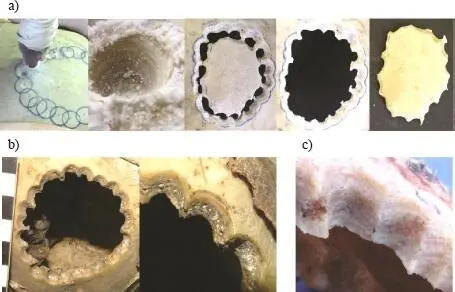
Figure 4.13. Experimental extraction of the trepanation flap. (a) Successive steps of the protocol until the bone flap was obtained. (b) Photo of the edges of the trepanation of MNHN-HA-30187. (c) Comparison of the edge obtained experimentally on dry skull. Photos: © Dr. C. Bou
4.4. Discussion
4.4.1. Identity of the deceased and health status
The Chachapoya mummy MNHN-HA-30187 is that of a male who died between 20 and 30 years of age, approximately 1.73 m in size (±2 cm). Consistent with an early age of death, the individual shows an overall “good” skeletal condition: no pathology, degenerative or traumatic, is noted, and despite the presence of three small carious inclusions, the oral condition is satisfactory, with moderate attrition and no ante mortem tooth loss. However, soft tissue imaging suggests that the male had an infectious lung disease. The presence of mediastinal calcifications suggests tuberculosis or granulomatosis. Tuberculosis is a disease known to have affected expanding Andean populations (Guillén 2012). Several cases were documented at the Laguna de los Condórès Chachapoya site, where 25% of 188 mummies studied were diagnosed with tuberculosis (Friedrich et al . 2010). At the scale of the Piedra Grande region, where mummy MNHN-HA-30187 originated, no epidemiological study has been conducted to date. If the diagnosis were confirmed, we do not know at this stage if the health status of the deceased is correlated with a specific burial treatment. In any case, if the young male was a carrier of this disease at the time of his death, there is no evidence that it was the cause of death. The evidence found on the corpse, which bears witness to the perimortem treatment to which it was subjected, nevertheless raises questions about the link between health status and burial practices.
4.4.2. Treatment of the corpse and embalming
The experimental approach which tested the trepanation method practiced on the mummy’s skull supports the hypothesis of a craniectomy by successive circular micro-drilling, obtained by the rotation of a tool applied perpendicularly to the bone surface. The flint tool, in the form of a driven point, used manually or with a bow, is compatible with the wear observed macroscopically on the edges of the trepanation. However, at the end of this experiment, an important point must be made. The flint tool wears out rapidly and must be replaced regularly (eight were used in this experiment). The need for more and more tools, whose morphology evolves over the course of the experiment, does not fit with the “standardization” effect implied by the regularity of the diameters of each drill phase carried out on the mummy. No doubt new tests, using different materials – always in keeping with what the cultural framework allows us to envisage – should be attempted in the future. On dry bone, obtaining a bone flap with a diameter of 20 cm 2, made up of 20 confluent holes, required four hours of work. It is certainly probable that in the hands of experienced operators, the opening of the cranial cavity of the Chachapoya male would have required less time, but the methodical operation to which it testifies could not have been carried out quickly.
On the mummy, the edges of the trepanation are sharp and show no signs of healing. The constituent structures of the cranial vault, the external table, the diploe and the internal table are very clearly legible along the entire contour of the opening, and show no evidence of reworking. The edges are sharp and draw the contour of each drilling with precision. The trepanation of the mummy is thus comparable in every way to that carried out on dry bone, and thus implies a post-mortem operation. However, the absence of healing does not mean we can fully exclude the hypothesis of an in vivo trepanation, which would have been followed rapidly by the subject’s death. The location of the trepanation, which spares the main pericerebral vascular structures, suggests a strategic choice aimed at limiting the risk of bleeding, in contradiction with a post-mortem procedure. Nevertheless, it should be emphasized that the opening is also located astride the lambdoid suture, which suggests a high risk of complication. In addition, the skull’s skin, which is absent at the trepanation site, has the same serrated cut on some of its edges as the edges of the trepanation itself (Figure 4.3(b)). This indicates that the drilling was carried out directly from the outside of the scalp, which seems unlikely on a living subject.
Читать дальше
